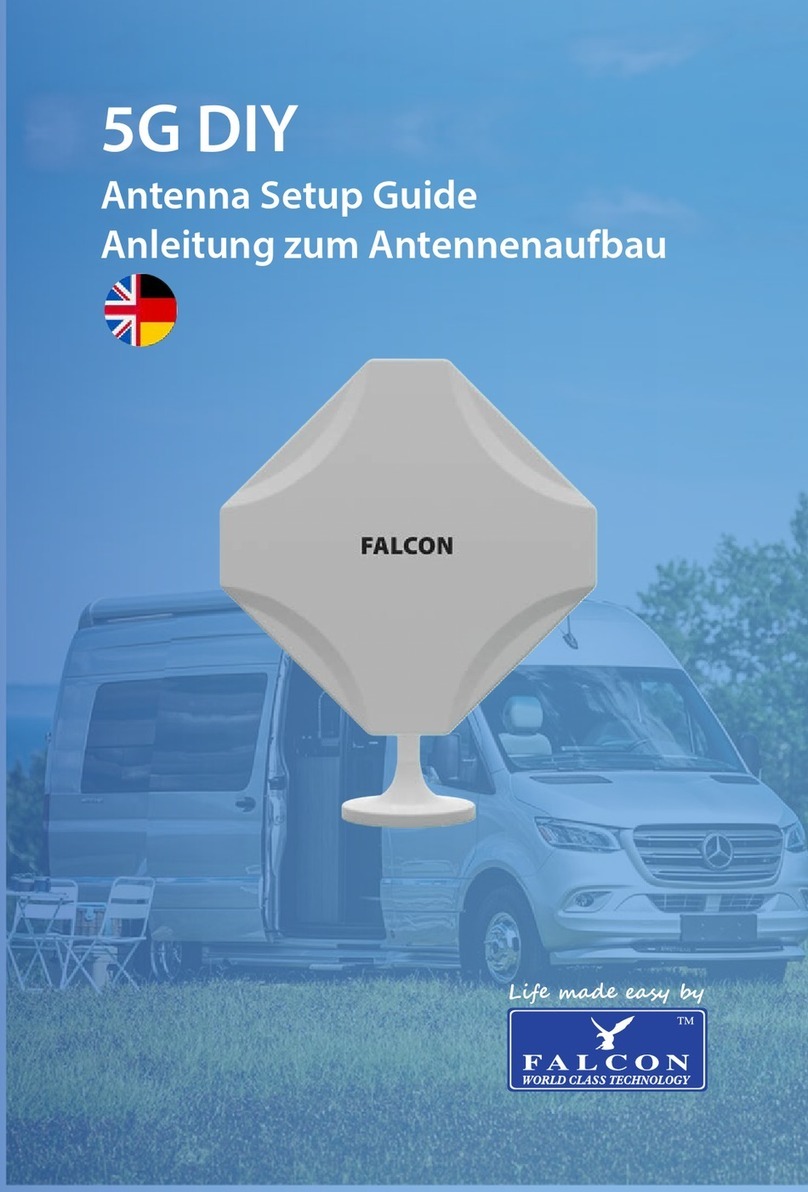
10
Troubleshooting
1. If you are using a TV alone then it must have a satellite receiver built in and you must have selected the correct
source, eg. Satellite or DVB-S (not DVB-T or DVB-C). If you are using a separate receiver make sure you have
selected the correct source to view the receivers output, usually HDMI.
2. Make sure you have a channel list loaded into your TV or satellite receiver and a channel is selected (we suggest
BBC1).
Some televisions such as the Falcon range allow you to load a preset channel list without having the dish aligned, for
others you can do this by connecting to an already aligned dish and run a channel scan. Alternatively the QuickSAT
Satellite nder will allow you to position the dish without a preset channel list and then run a scan. This is available on
our online shop or call 0800 622 474.
3. Make sure your TV or receiver is set to the correct satellite, for UK TV this is Astra 28.2E also known as Astra 2,
Astra 2 E/F/G or Astra 2 A/B/D
4. Make sure the elevation meter is set to degrees (see page 4). If the meter is not showing the degrees symbol (°)
press the mode button repeatedly until it does.
5. Check the elevation meter is reading close to 0 when placed on a known level surface. If it does not then follow
the re-calibration procedure below.
6. Make sure you have clear line of sight in the direction the dish is pointing, ie. no buildings, vehicles or trees in
the way.
7. Check the speaker. Make sure you have the batteries in the the correct way round and that it is turned on, it
sounds obvious but it is easy to get wrong. Check all your connections again and make sure that you are plugged
into the audio out or headphone out of your TV and not the audio input and that the volume on the TV is turned
up. If you are using a separate satellite receiver that has its own volume control check that is turned up as well.
To check the sound from your television to the speaker you can try playing a DVD on your TV and see if you can
hear it through the speaker.
Another simple test to check that the speaker is working OK and that the batteries are good is to plug the speaker
into the headphone output of either your phone or a portable audio device/MP3 player and play some music or
video to check you can hear it through the speaker.
8. Check that the compass is pointing in the correct direction. Note: Always store the compass away from the
elevation meter as the magnetic base of the meter can aect the compass if the are in close proximity.
Calibrating the elevation meter
Under normal circumstances the meter should not need calibrating, however the calibration can be checked and if
necessary re-calibrated using the following procedure;
1. Turn the meter o and put it on a at, smooth surface.
2. Press and hold the ON/OFF and HOLD buttons until CAL shows on the display.
3. Keeping the meter still press the HOLD button until CAL1 shows on the display.
4. Rotate the meter by 180 degrees then press the HOLD button until CAL2 shows on the display.
5. When CAL2 disappears the calibration is complete and the LCD will show the current angle.
Still having trouble?
Call us on 01928 759 239 and will be glad to help.





























